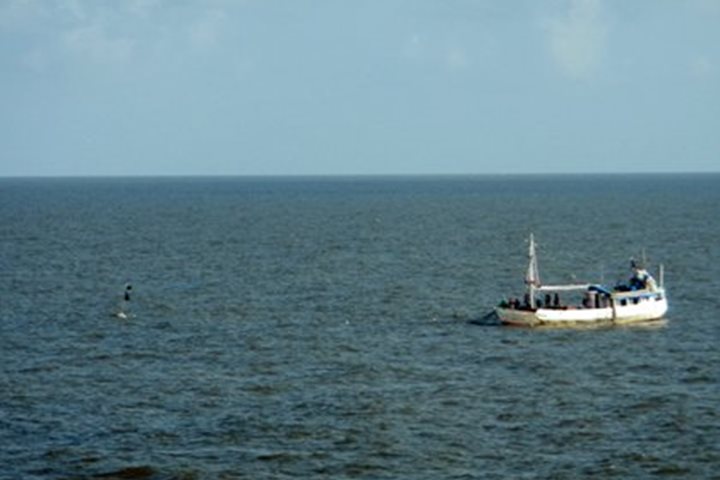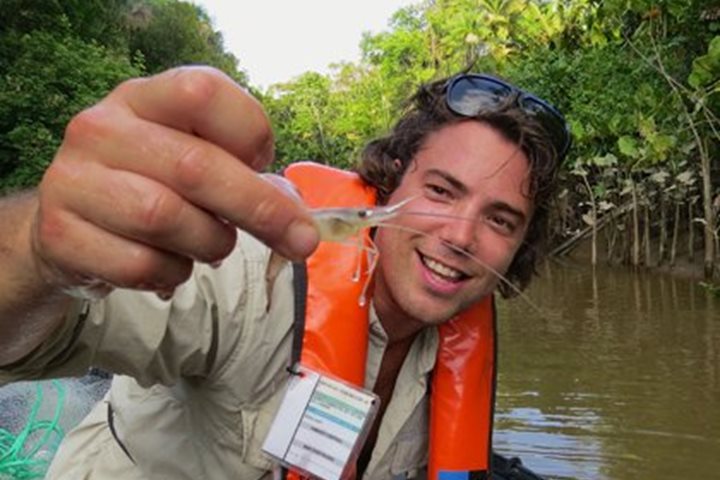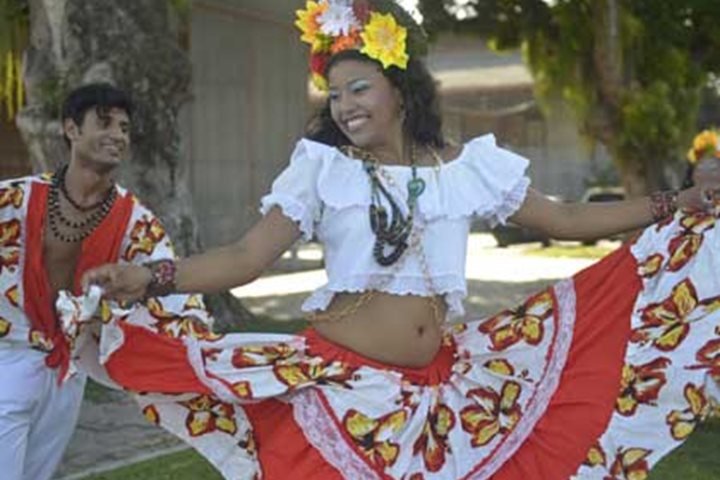Call +1.800.397.3348 or contact your travel advisor
Expedition Stories
Our fleet navigates the world in search of adventure. These are the stories they bring back…
Loading...
Loading...
Previous Reports
9/21/2013
Read
National Geographic Explorer
Orinoco River
We experienced a very relaxing morning at sea, which allowed us to recuperate from the past two or three days of excursions in Trinidad and Tobago. Because of our late departure last night from Port of Spain, Trinidad, we decided to wait until this morning before conducting our Lifeboat Muster exercise. This also gave us a chance to introduce the full compliment of Lindblad Expeditions staff naturalists and National Geographic lecturers and photographers. There wasn’t a lot of marine life to be seen this morning, apart from a few bottlenose dolphins, flying fish, a magnificent frigatebird, and a lone masked booby. What we did see in abundance, however, were oil rigs dotting the relatively shallow and calm seas off the coast of Venezuela. Today, Venezuela is one of the most important oil-producing countries in the world, and this is also the most important aspect of its national economy. In the late morning, we suddenly encountered greenish tan-colored water that gave evidence we were approaching the mouth of the Orinoco River. The silt-laden fresh water outflow from the river does not immediately mix with the Caribbean Sea’s salt water and the surface meeting line of the two different densities of water (fresh water versus salt water) was very obvious. As the day wore on, the water we were sailing in got muddier and muddier and as we closed in on the river mouth itself, many more species were observed, including various land birds, shore birds, and terns. We also noticed trees, logs, and aquatic plants, such as water hyacinths, that had floated downstream and were well on their way out into the ocean. By mid-afternoon, we picked up our river pilot somewhere within the long excavated channel leading into the Orinoco River. Soon, the magnificent tropical rain forest could be discerned on either side of the ship, first by binoculars and later by one’s naked eyes. The late afternoon clouds were very impressive, and we could pick out huge cumulo-nimbus clouds forming into thunderheads far away over land. As our vessel came closer to the eastern shoreline, we could see it presented us with an impenetrable wall of greenery. This flooded edge of the forest is composed of water-resistant trees and all sorts of water plants. It was surprising to suddenly see river people appear occasionally from out of nowhere, it seemed, in small dugout canoes in order to wave to us and ride over our wake. Farther upstream, we began seeing a few widely scattered stilt houses along the forest edge. There were also inviting little tributaries that led into the dense tropical rain forest, which seemed to be beckoning to us. Some people would look at all this and think it something of a “Green Hell,” while others, such as us Lindblad Expeditions naturalists and guests, see it as a kind of “Green Heaven.” We anchored around sunset near the mouth of a tributary called Rio Araturi, and immediately spotted some red howler monkeys in the tree tops. Another wildlife highlight here, just before dusk, was the sighting of a small flock of blue and gold macaws. This looked like an ideal place to conduct a night expedition. So, after an early buffet dinner, about half our compliment of guests opted to go out with us on a night excursion. Everything really looks different in the dark. It was great fun to explore along the jungle’s edge, using powerful handheld spotlights with which to search for the eyeshine of creatures in the trees and bushes. Several interesting animals were spotted, including a couple unidentified mammals in trees, bats, a tree boa, various frogs, a big water spider, and more. Viewing the vegetation up close was also interesting, and we pushed our Zodiacs deep into some narrow, little tributaries where we had to maneuver through brush and duck under overhanging vines and branches. The waning moon, which was just a couple days past its full stage, rose during our venture and gave us some extra light to help us find our way around the river system. It was a near perfect excursion…both adventurous and fun.
9/23/2013
Read
National Geographic Explorer
At Sea Between Venezuela & Guyana
Today was a day of transitions. Early in the morning we exited the Orinoco River and headed out to sea. We left behind the muddy brown shallow river and entered the deep blue ocean. We left behind trees, monkeys, and parrots, and searched for the sparse wildlife of the tropical ocean. We wrapped up our thoughts on Venezuela and the Orinoco, and began to think ahead to Guyana and farther south. After leaving the shoreline, we headed out towards deeper waters and hopefully a bit of wildlife. Many flying fish were spotted and they created quite a photographic challenge. As the pressure wave of the ship approached them, they took “flight” to escape. We had a short window of time to capture images of them, and many of us tried and succeeded. A few birds came in towards the ship, possibly to eat some of these flying fish. Some terns and a shearwater were seen, and one masked booby used the ship to get a meal. As the fish reacted to us moving through the water, the keen-eyed booby would plunge from high, occasionally grabbing a fish. Our day ended with a musical transition as well. Our guest musician, Drew Gonsalves, played some excellent Calypso music, which is popular not only in Trinidad but in Guyana as well. We left behind one great river, the Orinoco, and are heading towards a second. The Essequibo River in Guyana will be our home for the next two days, and I can’t wait to transition back into the world of the tropical river.
9/26/2013
Watch
National Geographic Explorer
At Sea, En Route to Suriname
This morning we sailed over the bar of the Essequibo River in Guyana. We had to time our departure to coincide with the highest tide because the bar is very shallow. We made it over without much water under the keel—but enough. All along the way we were dodging fishing gear which had been set right in the middle of the channel and which made the transit even more interesting than it would have been otherwise. As we reached the ocean we sailed for miles in the muddy river water, which extends far out to sea, floating on top of the more dense salt water. Finally we reached the blue ocean water and then began to see more fishing activity. The ship traffic in the river water was comprised primarily of small ships bringing in fuel oil from Venezuela as Guyana has no local petroleum supply. After a very full day yesterday, which included a speedboat ride up the river, followed by a wonderful airplane ride up to the Kaieteur Falls where we walked to the falls and along the river, then we returned by another airplane ride and speedboat trip back to the ship, everyone was ready for a day at sea to catch up. We spent the day with presentations on the rain forests of South America and the ethnobotany of rain forest plants. In the afternoon we screened the film Papillion to prepare us for our visit to Devil’s Island in French Guyana if a few days. The rest of our day was spent reviewing our many photographs from our trip to Kaieteur Falls and enjoying watching the sea pass beneath the keel. We were sailing against the South Equatorial Current, which extends a few degrees into the Northern Hemisphere and noticed that the ship was being set at a rate of nearly 1 knot astern. This current continues on westward to carry warm equatorial water into the Caribbean and is one of the most important currents in the equatorial Atlantic.
9/28/2013
Watch
National Geographic Explorer
French Guiana
Today we arrived at the last of our easterly sequence of the three Guianas, finding ourselves in French territory. And how immediately obvious that always is: here we were served delicious tartes aux pommes by elegant young ladies who poured good strong coffee with a chaser of Perrier frappé . In La France Outre Mer , it is always the metropolitan culture that dominates, tartes aux pommes as though we were in Normandy and not on a tropical island with an abundance of fruits, save for apples. The local music too, played on board by Chris Combette and his band, might have come straight from Paris; indeed rumors have it that it did just that! The name Guyana (or Guiana) is the Amerindian name for the entire territory, meaning land of rivers—a “Wild Coast” as the Dutch called it—carved up and fought over by the three colonial powers in question (Britain, Holland, France) for its value as a location for sugar plantations that operated at huge profit on the basis of slave labor. Not until the twenty-first century did any of the three Guianas have a road connection to the rest of South America. Their populations lived predominately on the coastal littoral and were oriented culturally to the Caribbean. Our visit to French Guiana was in fact not to the mainland at all but to the archipelago of Les Iles Salut, a name freighted with irony given the archipelago’s role in colonial history. The “Salvation Islands” consist of L’Ile Royale (some 28 hectares), Joseph (20 hectares) and Diable (14 hectares), the latter infamous as Devil’s Island, a prison destination to which France’s most notorious political prisoners were dispatched to end their days in solitary confinement. Damnation rather than salvation, then, and the same went for the larger prison that operated on Royale for nearly a century from the 1860s to the 1950s. We toured the evocative prison blocks, hospital and cemeteries, pausing for coffee and cakes at the verandah overlooking Devil’s Island. It was also possible for guests to visit the neighboring island of Joseph by Zodiac Devil’s Island is famous for several of its prisoners: Henri Charriėre, of course, the subject of the movie Papillon but most famously Capt. Alfred Dreyfus, the Jewish army officer falsely accused of treason in 1895. His case was courageously taken up in Paris by the novelist Emile Zola who wrote the famous open letter to the President of the Republic: J’accuse. Dreyfus was repatriated to France the following year; eventually to be released but the issue of anti-semitism ran on in Europe, with Zionism as its foil, for over a generation with devastating consequences. Devil’s Island, an apparently idyllic tropical island, has a disturbing past.
9/30/2013
Read
National Geographic Explorer
At Sea
We found ourselves sailing through a most unusual sea today as we made our way towards the north entrance of the mighty Amazon River. We were in the ocean over a hundred miles off the South American coast at breakfast time and the water beneath our keel was fresh enough to drink. The first European explorers to sail in this region called it Mar Dulce. The rich light-brown color of the water told us tiny suspended sedimentary particles had been carried far out to sea by the distant river. It has come from the eroding Andes mountain range over twenty five hundred miles (4,000 km) to our west. So great is the volume of freshwater being discharged from this system, one must travel over two hundred miles (320 km) offshore to reach clear ocean seawater. During the day, we enjoyed three very interesting presentations. Tyrone Turner talked about the Quilombos of Brazil, a vibrant culture of people that are descendents of escaped slaves. Wade Davis presented “People of the Anaconda” and told us about some of the indigenous populations of the Amazon. Tom Ritchie talked of the Columbian exchange, that is, things that were introduced from the New World to the Old and vice versa. By suppertime we had entered the broad mouth of the north entrance of the Amazon River Delta. It was tricky navigating through the channels in this broad, featureless braided river system and our navigation officer remained diligent, using both paper charts and electronic charts displayed on monitors (see photo). From here we continued slowly up stream toward the city of Macapa, where we planned for a morning arrival and clearance into the country of Brazil.
10/2/2013
Read
National Geographic Explorer
Amazon River Delta, Brazil
After having spent the night sailing upstream in the Amazon Delta, National Geographic Explorer arrived off the mouth of Rio Pucurui just before sunrise. We immediately launched the Zodiacs for an early morning expedition. It was an interesting phenomenon that our ship seemed to be steaming at about four knots while we embarked and disembarked guests with the Zodiacs. Of course, the ship was securely anchored in the strong river current and wasn’t moving at all. We spent a couple hours cruising with the Zodiacs in the narrow, winding Rio Pucurui, listening to wonderful and exotic sounds of nature, i.e. bird songs and frog callings. The smaller birds were often difficult to view, which is pretty normal for a tropical rain forest environment, but the larger species that typically perch in the open tree tops and/or soar just above the forest were well in evidence. This included various kites, toucans, parrots and macaws, and ultures…particularly the greater yellow-headed vulture (a close relative of the North American turkey vulture). Everyone was impressed by the multitude of different shades of green seen in the river forest. Although the main blooming season for most tree species is now finished, many of the aquatic plants, as well as the vines covering the forest edge, were still with flowers. One of the highlights of the morning excursion was the sighting of a little silky anteater, or tamandua, climbing around in the branches of a tree growing along the river’s shoreline. Like many mammals in tropical South America, the silky anteater has a prehensile tail, which helps it move about on spindly branches as it searches out ant nests and termite nests in the trees. We passed by several Caboclo homesteads, and could only imagine what they must have thought of us as we motored past them, waving and taking photographs. Although this may seem a bit like Eden, with a simple lifestyle in a beautiful place, life must still be a struggle for these people. Few of us would be willing to give up our modern conveniences and technology in order to trade places. These are river people, so it was no surprise that we saw lots of river boat traffic, consisting of simple dugout canoes, small wooden and fiberglass motorboats with long-shafted propellers, and large river boats of 35 to perhaps 50 feet (10.6 to 15 meters) in length. Boats provide the only form of transportation here, since there are no roads in this region. We saw cargo boats, trading boats, single family boats, and passenger vessels (including at least one “school bus” boat). Much of the rest of the day was spent transiting the famous Narrows, an intricate collection of narrow waterways winding among the islands inside the Amazon Delta, and this provided some more very scenic cruising. As we passed by scattered Caboclo river homes, many people (especially kids) quickly launched their boats in order to come out into the wake of our ship. They obviously don’t get much wave action under normal conditions here. It also proved to be great nature watching from the decks, as we were able to view the dense forest quite close from the high vantage of the ship, noting that this is secondary forest. Most of the huge, ancient trees had long ago been harvested, which wasn’t surprising from the number of saw mills we saw along the river banks. In addition, we passed numerous small communities, and even a couple rather large communities…all the while with teenagers, racing around, behind, and alongside our vessel in their noisy little motor boats. Many more bird species were enjoyed within The Narrows and perhaps the most remarkable one was the amazing swallow-tailed kite. One would probably not easily tire of watching the spectacular aerial displays and flying ability of this large, beautiful bird as it swoops, twists, and turns just above the tree tops searching for lizards, frogs, small birds, etc. Several pink-colored Amazon River dolphins, or botos, were seen surfacing briefly and rolling at the surface. In the late afternoon, our ship anchored near the mouth of a little tributary that we have named Rio Bud, in honor of our expedition leader. We spent the rest of the day exploring Rio Bud with Zodiacs, cruising slowly through the narrow, winding waterway…enjoying the vegetation, waving at locals living along the banks, and watching various birds and a troop of squirrel monkeys. In the meantime, many locals came out to the ship in their boats and did some trading with the crew. Everyone returned back to the ship just as the sun set, and we began steaming toward the great Amazon city of Belém…tomorrow’s destination.
9/22/2013
Read
National Geographic Explorer
Orinoco River, Tres Caños
Today was our first daylight outing to the northern coast of South America as we made our way down the mighty Orinoco River. We started off in true expedition style, up at 4:30 am and in the Zodiacs by 5:15 am. We headed directly for a narrow channel spotted on the charts, exactly the surroundings and habitat one looks for on the wide rivers. As the sun broke through the dense jungle we were immediately gratified with views of over-flying large Amazon parrots, neotropical cormorants, herons, and black-bellied whiling ducks—this compounded with the symphony of multiple bird calls. All Zodiacs drifted nice and slow through the channel which yielded a great array of birds. Views of northern caracara, yellow-headed vultures, common black hawks, and a great number of smaller riverside birds (as shown in the picture of a masked cardinal). Making our way down, we ran into a couple of fishermen rowing small dugout canoes on the edge of the channel, trolling a very thick line. We pulled up next to them to ask what they were fishing for. They answered “catfish.” Our next question was about the size of their line? There was a smile and the fishermen said, ¨They are really big ones. Last night one was tied off on a branch, this morning we went to check it and the branch was broken of the tree!” We stayed in the channel for about two hours, enjoying every moment of our first daylight adventure. We returned to breakfast and the ship continued its journey to Cuidad Guiana where we needed to clear the ship into Venezuela. In the afternoon we enjoyed a fantastic presentation by Jacob Edgar and Drew Gonsalves on the influences of music from Trinidadian culture. We ended our evening with the amazing gastronomic surprise on the back deck: Captain’s welcome cocktails and dinner. We enjoyed yellow-fin tuna sushi or lightly grilled. The spread of seafood was so well displayed on tables that it looked like art work.
9/24/2013
Read
National Geographic Explorer
Essequibo River, Guyana
We entered the murky brown waters of the mouth of the Essequibo River just before sunrise marking a first for Lindblad Expeditions-National Geographic visiting the small country of Guyana. Our visit here will be centered around this magnificent river ecosystem as well as exploring far into the interior the next day. It would be safe to say that not too long ago a visit here, even in expedition fashion, would have been quite difficult due to the near complete lack of infrastructure to support even moderate tourism. As we navigated up the mighty 1000-kilometer-long Essequibo towards our anchorage we were immediately taken by the lush, rich shoreline vegetation and surrounding lowland forests of Guyana. An aspect of Guyana we would soon learn to be distinctive to this nation’s rising status in tropical conservation with over 80% of the country blanketed in intact forests and other associated ecosystems. Nearing our anchorage we sailed along the large mangrove- and forest-covered Hog Island spotting various bird species perched atop large canopy trees and soaring along the tree tops. Laughing Falcons, Yellow-headed Caracara, Black Hawks, and one large Black Eagle Hawk perched alone in a large tree, its crest erect and the bird poised to strike. Our anchorage for the next two nights here would provide us an excellent opportunity to explore this magnificent river. Before we were to set out, Guyana’s Minister of Tourism, Irfaan Ali and other delegates came aboard to welcome us. Taking advantage of the slightly cooler temperatures in the late afternoon we set out in Zodiacs to get a closer look at the river, forests, and some of its inhabitants. Typically in the tropical rain forest mid-day heat brings much of life to a restful halt. Mammals and birds may roost in sheltered, shady areas awaiting the cooling effect of the fading day light. There are many islands breaking up the channel of the river, which serve as isolated patches of habitat. Our main exploration would take place on a small tributary called Weri Wearikuru Creek. This slow meandering coffee-stained channel brought the life and diverse beauty of the forest up close and personal for our enjoyment. Though we were 20 or more miles upriver the effects of the tide are felt, backing up the fresh water as the tide rises and draining the channel like a bathtub upon its recession. As we entered the creek the tide was turning from low to high, making the current flow upstream. Muddy, clay banks exposed with creeping mango roots arching forward into the channel as well as beautiful Pterocarpa buttressed roots clinging to the banks and extending out like small islands into the creek. The intense diversity of plant life is accompanied by an equally impressive compliment of bird, mammal, and insect species. Some highlights for the afternoon would include hummingbirds hawking insects above the creek, Pygmy Kingfishers, toucans, several species of parrots, and lastly a large troop of Squirrel Monkeys that numbered in the scores moving through the forest and foraging in the early evening. As a conclusion to our first day here in Guyana we wanted to take advantage of every moment so we lowered a few more Zodiacs and set out on a nighttime exploration of the river. We used high powered lights to illuminate the forest and water surface in hopes to spot various forms of wildlife such as caimans (a crocodilian), snakes, amphibians, and mammals. Each Zodiac had a different experience, one spotted a small caiman along the shore line its eyes reflecting back red just above the water’s surface. Another group spotted a Waved Woodpecker in its cavity, a tree boa constrictor, and a large Black Witch Moth. Many bats coursed the night sky feeding on the abundant flying insects going about their evenings work.
9/27/2013
Read
National Geographic Explorer
Paramaribo, Suriname
We arrived to the port and capital city of Paramaribo in the wee hours last night, docked just downriver from the large bridge which offers road access connecting this country to French Guiana. Once daylight broke, our ship’s party split into three different groups, with very different agendas. The earliest risers began a day of birding with local guide Sean Dilrosun. Visiting three locations throughout the day, everyone was treated to some incredible sightings, even for some of our most experienced birder-watchers. Some favorites of the day included the rufous crab hawk, the Guianan piculet, and the blood-colored woodpecker, as well as numerous encounters with curious monkeys. After a brief stop for lunch at the ship, the passionate group continued their wanderings well into the early evening and everyone returned with smiles on their faces and many species to add to personal life lists. The remainder of the ship’s company split in two. One half chose to focus more on the history of the city of Paramaribo and the colonial history of the country of Suriname, while the other left the city for a more agricultural region, focusing on nature and the culture of the Maroon people. The city tour began with an introduction to the culture and history of Suriname, and continued through the day with visits to Fort Zeeland, Fort New Amsterdam, and the Marienburg Sugar Plantation. This last location was made even more special because the tour of the plantation was guided by its last surviving worker. The forts provided very different experiences and very different kinds of architecture. Fort Zeeland had an especially good museum as an introduction, and all of the sights gave a good perspective on the Dutch colonists who arrived in Dutch Guiana (now Suriname), and attempted to “tame” the wilderness here. Dutch is still spoken widely in the country, harkening back to this long-time colonial presence, but Suriname is a melting pot of peoples from many corners of the world: Chinese, East Indian, African, European, as well as the local Amerindians. This diversity is reflected in the religious tolerance that is found here as well. In Parimaribo, we visited a synagogue and a mosque which were situated side by side. We also visited a Catholic cathedral along the way, further illustrating the religious diversity found in this small corner of the world. The third group enjoyed a very diverse day, spending it entirely off the ship. Explorations began at a Neotropical Butterfly Park, with colorful and aromatic plants and numerous species of butterflies, moths, boa constrictors, and land tortoises, mostly for export to Europe and North America. We enjoyed being surrounded by the beautiful blue morpho butterflies as they fluttered around in their enclosure. Our second stop was to Para Flor , a private botanical garden in a rural part of the countryside. The shade provided by the numerous trees and flowering plants (and the palm fruit juice provided by our hosts!) was a welcome respite from the heat of the day. Lastly, we visited Santigron (meaning “sandy ground”), a Maroon community that was kept hidden for many generations. Maroons are the descendants of escaped African slaves, and their culture and society still reflect this. We sampled 14 different dishes of local fare for lunch, including the delicious “peanut rice” which is reserved only for special occasions. Our visit to the village included a boat ride on the Saramacca River, a walk through the traditional village to see the homes, architecture, and spirit houses, and finished with a cultural dance performance. The drumming and dancing was the most representative aspect of the African culture, which has seemed to change or evolve little in the generations of Maroons who have continued to make their homes in Suriname. The evening concluded with a spectacular lightning storm in the sky above the ship. Suriname is an incredibly diverse country with many different things to offer. It offered us merely a glimpse of the incredible possibilities in this amazing place.
9/29/2013
Read
National Geographic Explorer
At Sea off Northeastern Brazil
We left Devil’s Island last night and began our sail from French Guyana to our first landfall in Brazil. We welcomed another sea day which gave us a chance to catch up on our photographs and correspondence. The day was punctuated by several very informative presentations including one from Tom Lovejoy, one of our Global Perspectives Speakers on this voyage, who talked about the history of the Amazon. Tom has spent his life studying the Amazon and its ecosystem and is the world’s foremost expert on the region. We enjoyed another presentation on the interaction between the Amazon and its surrounding tropical oceans. The Amazon River is larger than the next seven of the world’s largest rivers combined and its discharge represents 20% of all the river discharge on the planet, so it has a large impact on the nearby ocean and the ocean affects the basin in return. Vincente Pinzón, the first European to sail into the Amazon estuary called it El Mar Dulce , “The Sweet Sea,” because of the volume of fresh water. In the afternoon we had a presentation by Wade Davis, another of our Global Perspectives Speakers, on the plants of the Amazon, particularly those with psychoactive and medicinal properties. We have now begun to see Brazilian fishing boats with their design typical of the entire country, setting their gill nets in the shallow waters of the continental shelf which is only 10-20 meters deep even though we are out of sight of land.
10/1/2013
Read
National Geographic Explorer
The River Amazon
This morning we woke on the Amazon River – huge, probably the most immense river there has ever been. The river is brown with sediment, a nice contrast to the tall green curtains of vegetation bordering the river and its tributaries. Smoke rises here and there as breakfast is prepared at small farms ashore. Ultimately we anchor at a small, diffuse town to undergo customs and immigration formalities for entering Brazil… this takes the rest of the morning, as we look with curiosity at all the activity around with boats of every size moving to and fro, like cars and trucks elsewhere. In the afternoon we make a Zodiac outing into one of the small tributaries. While this a special moment for everyone, our first intimate cruise on the Amazonian waters, it is particularly special for our baker Oscar… it is his birthday! We threw our cast net out a few times hoping for a piranha, but only Oscar had any luck; he caught a river shrimp. As always, plants are easier to “catch.” One of most distinctive and common plants along the water’s edge is a giant arum, Montrichardia arborescens . It has philodendron-like leaves and flowers. The plants have a single stem and stand about 15 feet tall with a white inflorescence (spadix) mostly wrapped in a spathe of almost one foot in length. At night, the inflorescence heats up and becomes somewhat malodorous, all helping to attach its nocturnal insect pollinators. There are many other flowers, animal tracks on muddy banks and the elusive four-eyed fish… their eyes are partitioned so they can look through the water and the air at the same time! It is said that they can knock insects off of leaves above the water with a jet of water they spit with uncanny accuracy. We spent a bit of time trying to get decent pictures of this elusive fellow. Later we found out that all the boats had similar yet different experiences resulting in analogous postures and meditative looks of their occupants.
10/3/2013
Watch
National Geographic Explorer
Belem
It was good to approach Belém from up river, as do the many local traders whom we saw unloading and loading their river boats at the riverside Ver-o-Peso Market on our morning tour of the city. The market had separate sections for fruit and vegetable produce, for fresh fish and for traditional medicinal remedies. Belém, like its counterpart in Lisbon, is the Portuguese for Bethlehem, like the English name Bedlam, in each case named after an order of nuns who founded a hospice at the respective sites. Other sites visited in the morning included the Basilica of Our lady of Nazereth, with its richly decorated interior and stained glass windows illustrating the Gospel story, and the Teatro de la Paz, a fine opera house built during the belle époque period of the rubber boom, where we were lucky enough to listen in on a rehearsal for a forthcoming production of Verdi’s Il Trovatore. In front of the theatre was a fine historic civic space, Independence Square, paved with the mosaic of small limestone and basalt blocks that characterize the urban street scene of any place in the world which the Portuguese colonized. The original Portuguese fort that historically protected the approaches to Belém now houses an interesting collection of artifacts, including fine ceramics, and its ramparts afforded fine views of the city’s situation at the Mouth of the Amazon. Our ornithologically-inclined ship-mates spent the morning visiting the Utinga State Park, a protected forest that protects the catchment area of Belém’s water supply. The group reported sightings of the cream-colored woodpecker and the black-necked araçari together with squirrel monkeys and black tamarin, the latter a localized species to this part of Brazil. After a delightful lunch in a restaurant overlooking the Para River our afternoon excursions included a visit to an artisan pottery at Icoaraci and to the Goeldi Natural History Museum and park, named after the Swiss naturalist, where we thrilled to be able to see and handle a newly-born indolence of baby three-toed sloths. Another option was a visit by river boat to the Boa Vista do Acara community where we sampled local produce and took a bush hike. In the evening we were treated to a charming after dinner performance on the aft-deck by Dona Onete, a spritely 73-year-old diva born in the heart of the Amazon rainforest and passionate about the musical culture of her homeland.
Showing 12 of 81

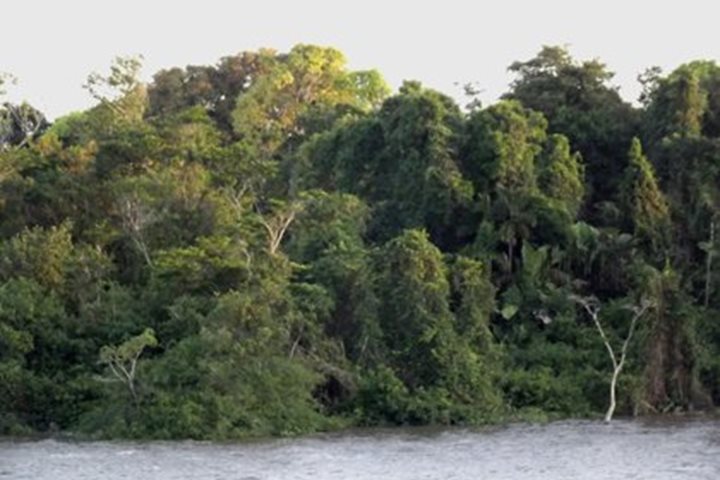
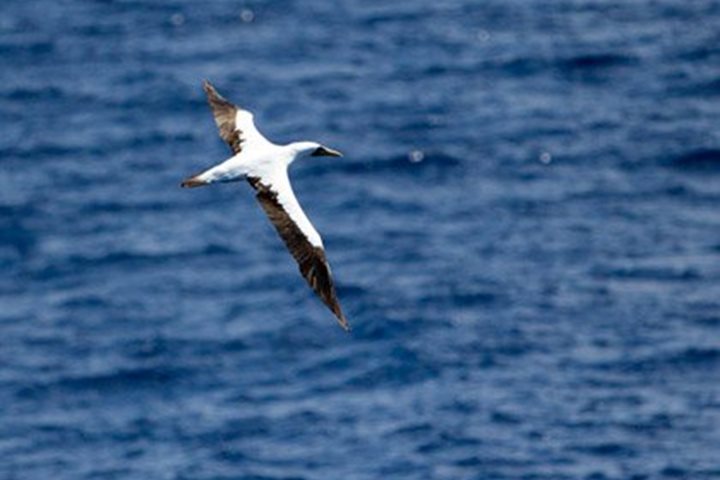
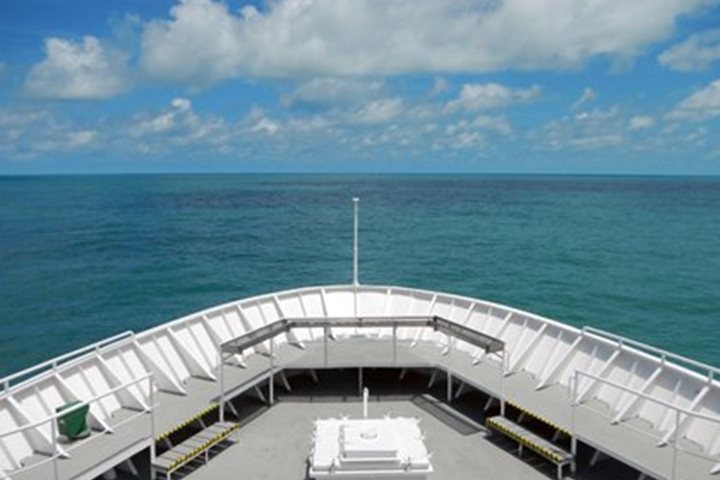
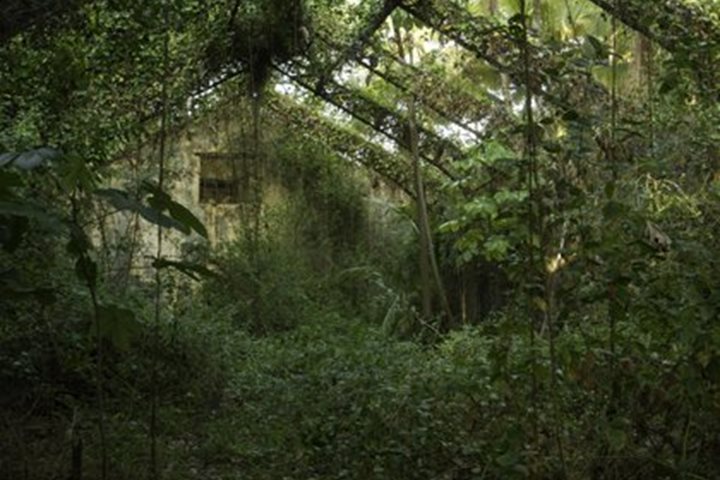
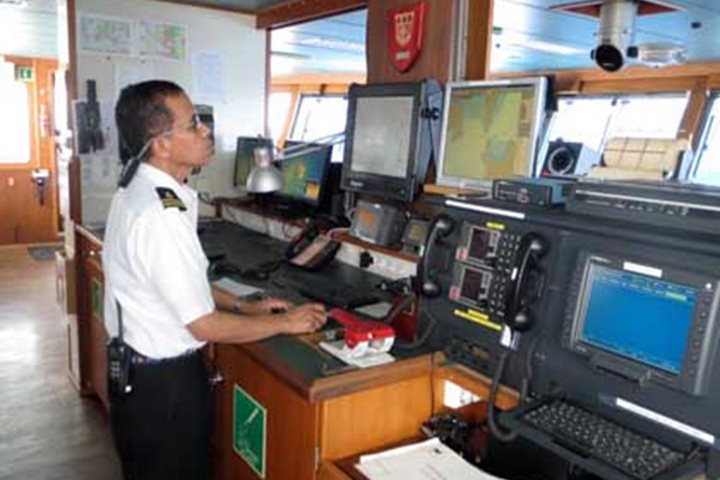

.jpg?width=720&height=480&mode=crop&scale=both&quality=85)
.jpg?width=720&height=480&mode=crop&scale=both&quality=85)

